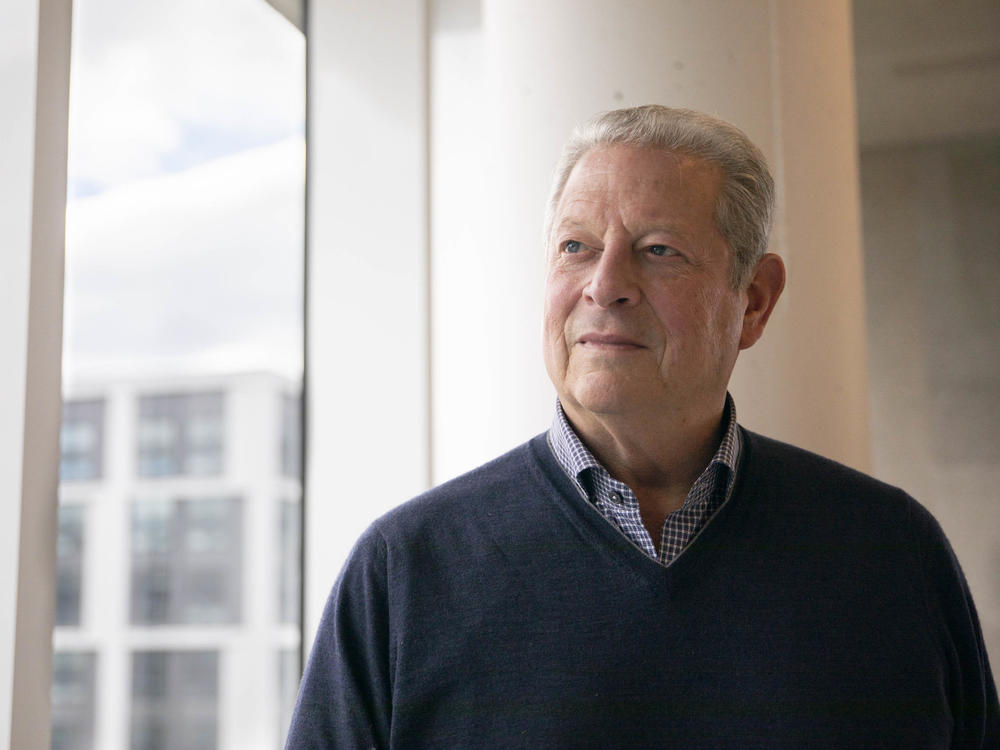Section Branding
Header Content
Al Gore helped launch a global emissions tracker that keeps big polluters honest
Primary Content
Updated November 14, 2022 at 5:18 AM ET
In the fight to reduce greenhouse gas emissions, one of the longstanding challenges has been figuring out who is exactly producing them and how much.
Now, a new global tracker is helping to make clear exactly where major greenhouse gas emissions are originating. Created by the nonprofit Climate Trace, the interactive map uses a combination of satellites, sensors and machine learning to measure the top polluters worldwide.
It observes how much greenhouse gases — carbon dioxide, methane and nitrous oxide — are being emitted at specific locations, such as power plants and oil refineries. Former Vice President Al Gore, who is a founding member of the initiative, said it is meant to serve as a more reliable and accurate alternative to companies self-reporting their emissions estimates.
"Cheating is impossible with this artificial intelligence method, because they would have to somehow falsify multiple sets of data," he told NPR's Michel Martin on All Things Considered.
Gore recently returned from Egypt where world leaders have been convening to discuss the climate crisis at the annual U.N. climate conference, also known as COP27.
He believes the tracker will help countries stick to their pledges to reach net-zero greenhouse emissions by 2050.
Climate Trace wants to track nearly every big source of greenhouse emissions
The emissions tool employs over 300 satellites; sensors on land, planes and ships; as well as artificial intelligence to build models of emission estimates.
Right now, it tracks about 72,000 of the highest emitting greenhouse gas sources. That includes every power plant, large ship and large plane in the entire world, Gore said.
And that's just the beginning. By next year, Gore hopes to be tracking millions of major emitting sites.
"We will have essentially all of them," he said.
Gore said 75% of the world's greenhouse emissions come from countries that have made pledges to become carbon-neutral by 2050. "Now that they know exactly where it's coming from, they have tools that will enable them to reduce their emissions," he told NPR.
He added that the database, which is free and accessible online, can help inform countries about how much pollution is being emitted by the companies they are working with or considering working with.
It is not enough for companies to self-report, he said. For instance, Climate Trace found that the oil and gas industry has been significantly underreporting its emissions.
"We found their emissions are three times higher than they have been telling the United Nations," Gore said.
In the U.S. specifically, oil and gas producers have underreported how much methane they've been releasing, recent research suggests.
That doesn't mean companies were intentionally cheating, Gore added. However, he said underreporting prevents governments and the public from staying on track with their net-zero pledge.
Six regional governments in Mexico, Europe and Africa have already entered into working agreements for using the tool, Gore said.
Gore remains optimistic about the climate future
The world is generally off track from its goal of cutting emissions that drive climate change, but Gore said he's been impressed by recent efforts around the globe to address the issue.
In the U.S., Gore pointed to the Inflation Reduction Act, which includes over $360 billion to tackle climate change and incentivizes consumers to make greener choices. Gore described the law as "the biggest climate legislation in the history of the world."
He also praised Australia for voting in a new government that pledged to shift away from coal and Brazil for electing a new president who vowed to stop destroying the Amazon.
"So there's great danger, but there is hope," Gore said. "If we can summon the will to act."
Ana Perez and Adam Raney produced and edited the audio interview.
Copyright 2022 NPR. To see more, visit https://www.npr.org.
Bottom Content




